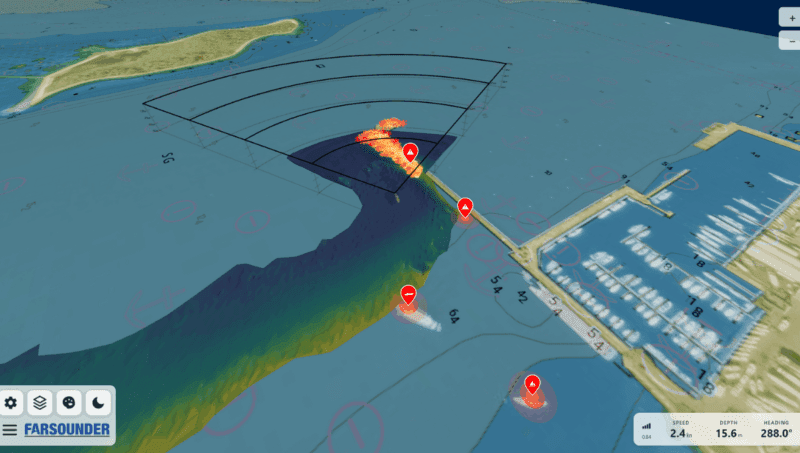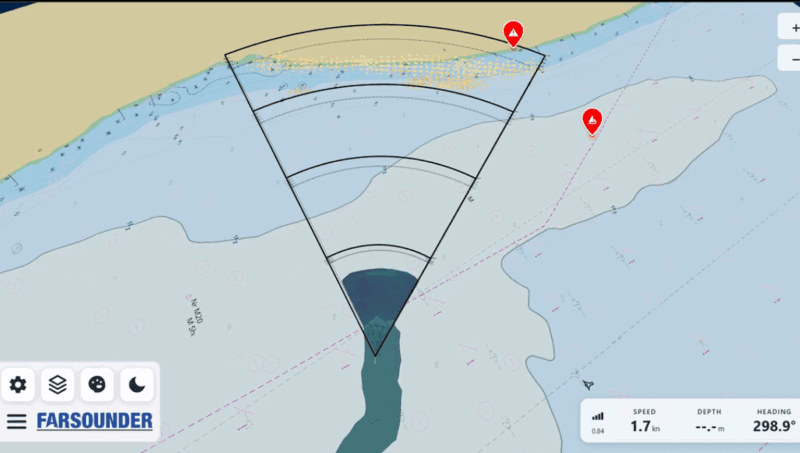How ROVs Are Transforming Offshore Oil & Gas
The oil and gas industry has always relied on innovation to explore further, drill deeper, and increase production. Today, one of the most transformative tools in offshore oil and gas...

The next era of naval superiority will be decided by how effectively USVs integrate within broader fleet operations.
Unmanned and autonomous systems are rapidly reshaping naval operations, advancing from experimental to essential. Naval forces across the globe are aggressively pursuing hybrid fleet archetypes merging traditional manned naval operations alongside unmanned surface vessels (USV). In many cases, this integrated dynamic is already being fielded; however, the doctrine for the roles these platforms will play is largely unwritten. Like most USV applications, a crucial area of focus lies on the sensor technology that empowers them to perceive, decide, and act independently across diverse maritime environments.
Situational awareness remains fundamental to every unmanned, minimally crewed, and autonomous vessel. Modern systems rely on a network of complementary sensors that translate environmental data into actionable intelligence. While radar, electro-optical/infrared, and machine vision systems provide valuable surface-level coverage, the underwater domain remains a challenge. In-water navigation hazards, poorly charted areas, and the lack of crew present real risks. In the context of naval operations, enhancing the effectiveness and value of unmanned vessels requires equipment that can expand capabilities beyond situational awareness alone.
U.S. and allied naval leadership, alongside innovators of the USV industry, are joining together to further develop the hybrid fleet concept. They are working to find ways that technology can help drive strategic integration. A large part of this concept is not centered on the design of USV platforms themselves, but rather the technology onboard. As the role of USVs within the hybrid fleet evolves, it is clear that 3D forward looking sonar (FLS) capabilities offer strategic advantages across the spectrum of current and future USV missions.

FarSounder’s Argos series sonars are currently used in the naval theater on both manned and unmanned vessels like DARPA’s NOMARS USV, providing a real-time, 3D view of the underwater environment up to 1,000 meters ahead of a vessel while also building a map of the seafloor everywhere it goes. Remote operators can leverage the system’s traditional user interface for a complete visual understanding of what the sonar “sees” ahead, improving decision accuracy and confidence. For autonomous platforms, fully processed sonar data is delivered through an ethernet-based machine interface, providing vessel control systems with the information required to make intelligent navigation decisions in real-time. The Local History Mapping™ feature stores collected depth data that can be shared across a fleet.
A common application of USVs in modern naval operations is to extend a fleet’s domain awareness. When deployed ahead or to the flanks of manned vessels, these platforms contribute to a wide area of coverage. Fused sensor data from multiple USVs provides early indications of enemy activity, allowing command units additional time and space to react. Incorporating 3D Forward-Looking Sonar enhances this network by filling the underwater information gap. Real-time detection of subsurface obstacles and mapping of the seafloor contribute to both navigational safety and tactical awareness. By continuously collecting bathymetric intelligence, fleets can optimize routing, improve operational tempo, and even infer adversary movement based on environmental data.
Similar advantages apply to intelligence, surveillance, and reconnaissance (ISR) missions. When patrolling or monitoring a designated area, USVs equipped with Argos 3D FLS extend ISR coverage, detecting underwater anomalies, submerged threats, infrastructure, or environmental changes relevant to mission success. Both applications provide a more comprehensive operational picture, enabling manned vessels to focus on higher-priority objectives and execute simultaneous missions.

Data collected by sensors onboard USVs is more valuable when it can complement other systems used across a hybrid fleet. Software-level compatibility enables data from the Argos 3D FLS to merge with AIS and ARPA targets, as well as smart camera systems like SEA.AI, providing operators and autonomous systems with an expanded view of their operating environment. Integration extends beyond the vessel itself through FarSounder’s SonaSoft™ software, which facilitates the incorporation of sonar data into (W)ECDIS and other situational-awareness platforms through our Software Development Kit (SDK). This enables both real-time and historical bathymetric data to be distributed across command networks, contributing to the larger maritime data ecosystem. The result is faster, more informed decision-making and the ability for naval leadership to coordinate complex operations with greater precision.
When operations extend into poorly or uncharted locations, environmental uncertainty poses both navigational and tactical challenges. Being able to continuously create a more detailed picture of the sub-surface environment through USVs equipped with Argos 3D FLS enables reconnaissance and mapping of these waters without exposing crewed assets to unnecessary risk.
Argos sonars map the underwater environment out to at least 8 times the depth below the sensor. Operating in water with a 50m depth can yield a full view of the seafloor out to 400m ahead of the USV, allowing for faster mapping compared to a down-facing sonar that can only receive seafloor data from directly below the vessel. By aggregating bathymetric data from multiple USVs, commanders can quickly develop a detailed understanding of terrain features, safe passages, and potential choke points. This data offers improved navigational safety and mission planning while supporting the establishment of supply routes and even safe ship-to-shore passage for amphibious landing operations.
Mine countermeasure operations (MCM) represent another mission set where 3D FLS can be applied. The inherent risk involved with this type of mission has made USVs an ideal asset to assist or replace manned MCM vessels. Traditional minehunting vessels often deploy towed sensor arrays, such as towfish, to identify underwater threats. While highly effective, towing expensive and mission-critical equipment below the surface introduces additional operational challenges.
Any sudden navigation change or unexpected underwater terrain feature can place the towfish at risk, potentially leading to sensor damage or mission disruption. A USV equipped with an Argos 3D FLS would be able to assess the underwater environment ahead of its position to identify underwater features that are harmless to the vessel but hazardous to the towed sensor array, allowing sufficient time to adjust course or towfish depth to avoid collision.
As defense organizations continue to adopt hybrid fleets that blend manned, unmanned, and autonomous systems, technologies like 3D forward looking sonar play a critical role in shaping operational success. Argos sonars extend beyond real-time navigation to become integral components of a larger information architecture, supporting machine autonomy, fleet-wide intelligence sharing, and strategic decision making. From domain awareness, ISR operations, and charting unknown waters, Argos 3D FLS significantly enhances the potential for unmanned operations within the modern hybrid fleet. To learn more, visit www.farsounder.com/usv.

Sign up for gCaptain’s newsletter and never miss an update

Subscribe to gCaptain Daily and stay informed with the latest global maritime and offshore news
Essential news coupled with the finest maritime content sourced from across the globe.
Sign Up